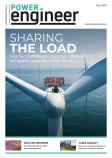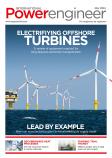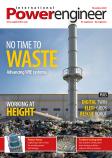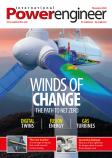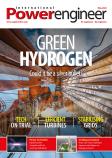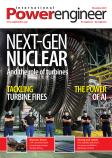The UK Atomic Energy Authority (UKAEA) has developed and deployed remote handling technologies as part of the decommissioning of the Joint European Torus (JET)
JET is continuing its research and development to inform and enable a sustainable fusion energy sector through characterising and analysing materials such as beryllium, tungsten and Inconel.
JET plasma science operations concluded at the end of December 2023, transitioning into the JET Decommissioning and Repurposing programme (JDR), which is scheduled to last until at least 2040.
UKAEA has committed to decommissioning JET sustainably and to use the programme as a showcase for technologies applicable to both fusion and adjoining sectors.
An early project was the sample retrieval campaign, which involved the removal of 66 tiles and components from JET in late 2024. The removed tiles and components are being processed and studied to examine their physical, chemical, and radiological properties, with the results helping to inform the decommissioning process.
The tiles and components are also providing an initial indication of the effect of years of high-powered plasmas on plasma-facing components.
Scientists sought to enhance their understanding of damage mechanisms during JET's final pulses, which involved multiple intentional plasma disruptions and associated electromagnetic forces, as well as aiming electrons at JET's inner wall. By purposely creating these conditions, scientists were able to see surface melting and the reverse waterfall effect, providing unique insights to help mitigate these issues in future fusion machines.
Samples will be investigated by UKAEA experts from the Tritium Fuel Cycle and Materials divisions, as well as by staff at Eurofusion laboratories across Europe, as part of multinational research programmes.
UKAEA will also upgrade its remote handling system to deliver the first phase of in-vessel decommissioning, involving the removal of approximately c.3,700 components from JET.
A full upgrade of JET's operating booms started in 2019 and includes the installation of the Remote Handling Operations Virtual Reality (RHOVR), which harnesses the Unreal Engine. Mostly known for its use in video games due to its creation of hyper-realistic 3D environments, it has been used in other decommissioning programmes, including at Sellafield.
Steve Gilligan, engineering integration manager, JET Decommissioning and Repurposing, UKAEA, said, “The sample retrieval operation was a huge success, demonstrating new capabilities and technologies. The team, which included newly trained operators, deployed the remote handling system, removing over 60 samples from the vessel. In addition, a collaboration with EUROfusion to carry out LIBS experiments – Laser Induced Breakdown Spectroscopy – gives us another view of the material properties in the vessel that will help for the future planning of JET decommissioning and take fusion science forward.”
Lewis Simmons, lead waste engineer, JET Decommissioning and Repurposing, UKAEA, said, “We ran the tokamak quite ferociously up until the end of its operations, pushing scientific boundaries and breaking records in the process. This all affects materials. The sample retrieval programme removed some of our most interesting and complex materials, and undertaking experiments or analysis on these materials gives an indication of what the rest of the tokamak system will look like. It gives us a good opportunity to benchmark all of our predictive models, and to plan for full-scale decommissioning.”
In addition to LIBS, in 2023, UKAEA developed and implemented Laser Induced Desorption with Quadruple Mass Spectrometry (LID-QMS), a method of measuring the adsorption of tritium and other elements onto tiles and components inside the JET vessel, utilising high-powered lasers.
Yevhen Zayachuk, plasma materials surface scientist, UKAEA, said, “LID-QMS and LIBS are techniques that are being developed now for the use in future fusion power plants, that will allow us to monitor in real-time, or near-real-time, the dynamics of accumulation of fuel within the material of the wall. The studies of samples removed from the JET vessel will be used in order to support the development of these techniques. This is a complicated process and will involve the labs that have previously worked with JET components and will be doing so in the future.”










